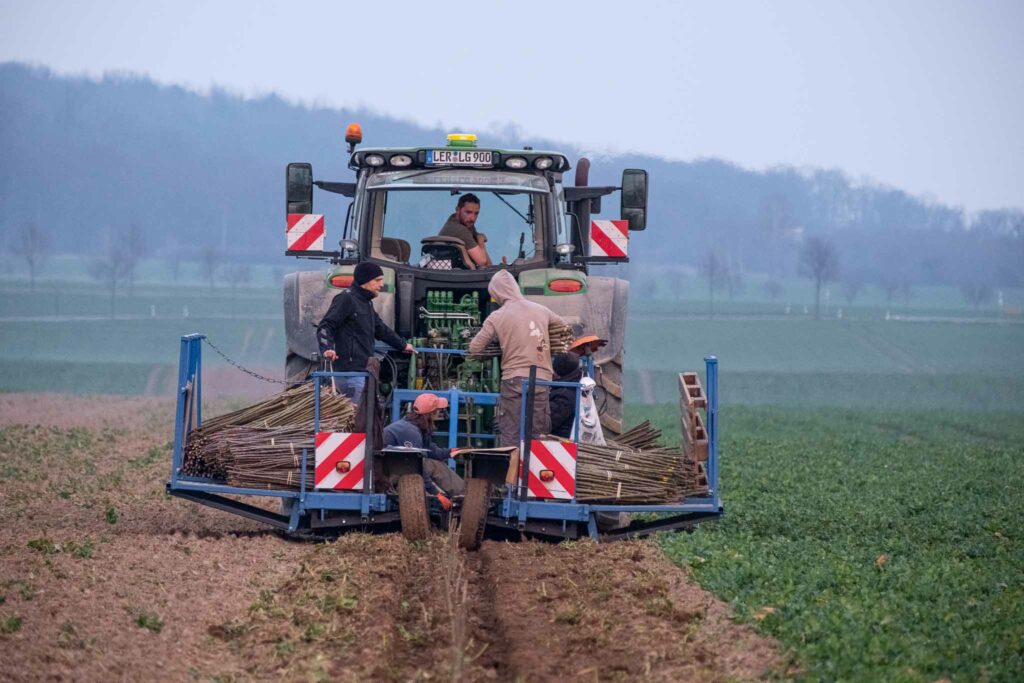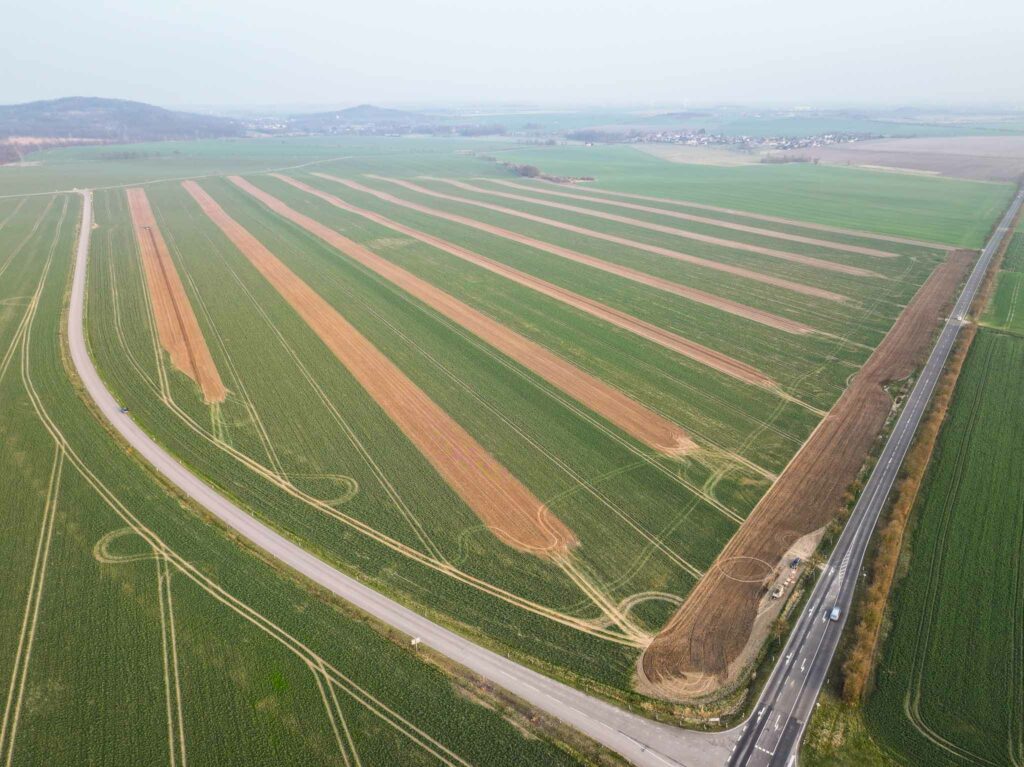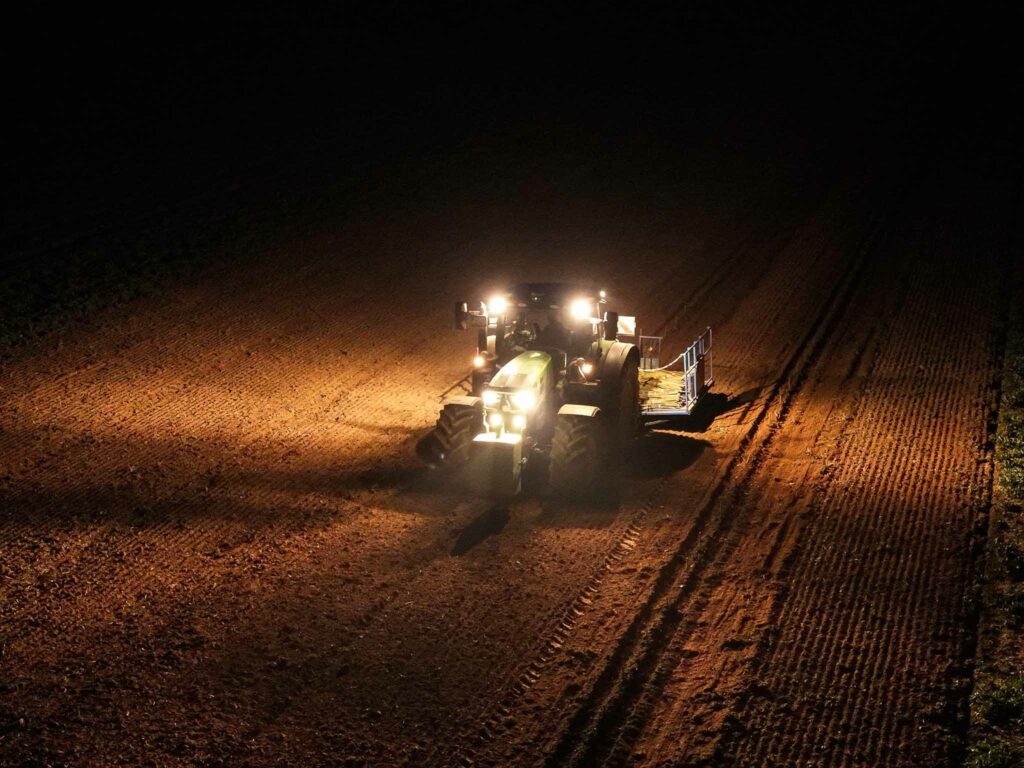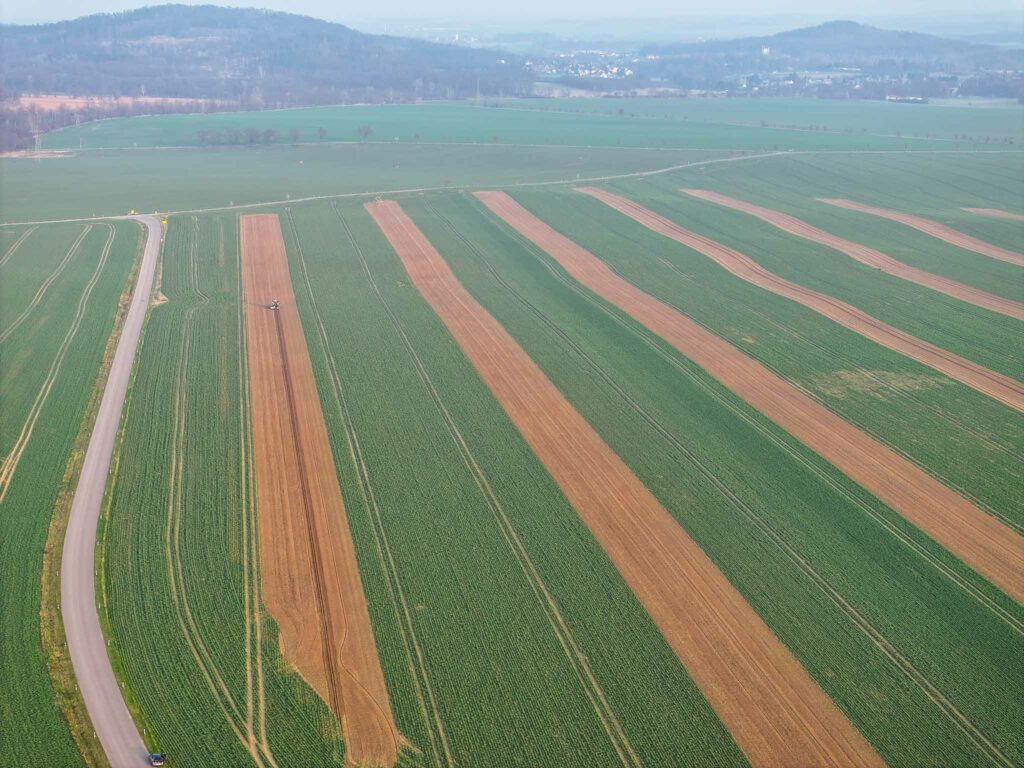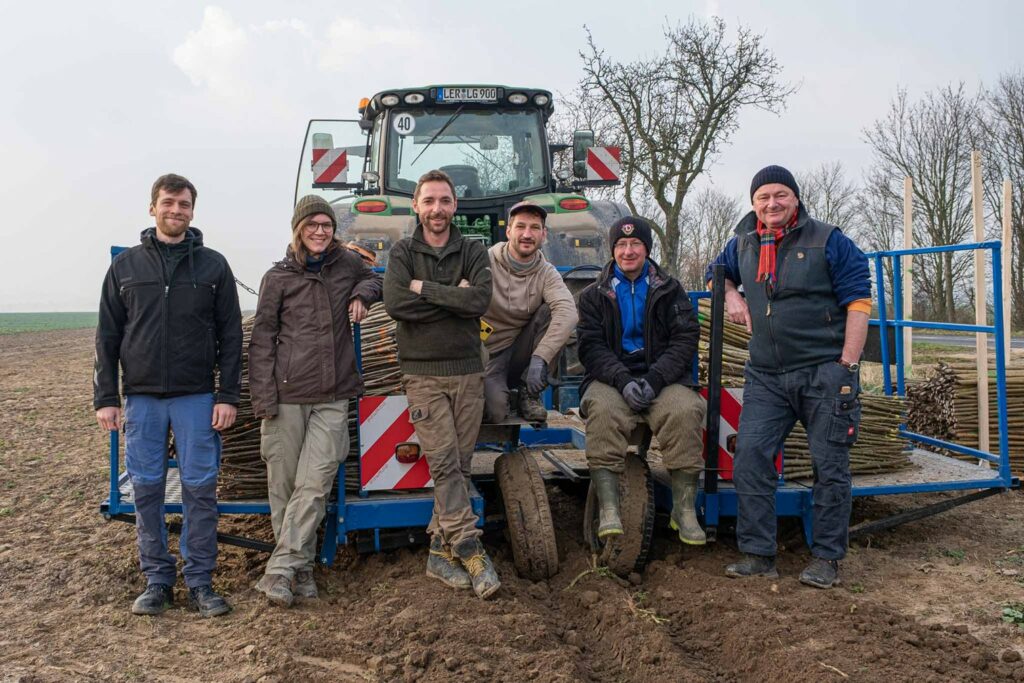In the week of 24th March 2025, Saxony’s largest agroforestry system was planted on 77 hectares of arable land on the border of the municipalities of Thallwitz & Lossatal in the district of Leipzig on the land of Agrargenossenschaft e.G. Böhlitz. This was part of the AFaktive sibling project AGROfloW.
Representatives of the Saxon State Ministry for the Environment and Agriculture, the State Office for the Environment, Agriculture and Geology and the district of Leipzig were on site for the joint inauguration of the works on 26 March to support this important hands-on project. The agroforestry system, which was established in cooperation with Wurzener Land-Werke GmbH, is intended not only to strengthen agricultural production and provide energy wood for the region, but also to serve as a model and demonstration site for practice and science.
‘The project is an example of how modern agriculture, climate protection and economic sustainability can go hand in hand. Agroforestry systems are a forward-looking method of strengthening our agricultural landscape,’ emphasises Gerald Lehne, 1st Deputy Mayor of the district of Leipzig.
Agroforestry system & woody plant diversity
A total of 26,110 poplars of six varieties and 3,029 deciduous trees were planted over an area of 17 hectares, divided into 10 strips of 18 metres each (the last strip to the north is 11 metres wide). The deciduous trees planted were wild cherry, pedunculate and sessile oak, wild service tree, sweet chestnut, Turkish hazel, small-leaved lime, Norway maple and walnut. These are always arranged in the centre of each of the five rows of trees in the strip. With a distance of 60 metres between the tree strips, there is sufficient space to continue to cultivate the field efficiently with the existing machinery.
The costs for planting and establishing the agroforestry system amount to around 100,000 euros.
From the idea to the implementation: agroforestry project brings farmers and partners together
The idea and initiative for agroforestry in the region originated several years ago as part of the BMBF-funded ‘WERTvoll’ project (BMBF = German Federal Ministry for Education and Research). It has now been realised in the ‘AGROfloW’ project (funded by the BMEL). In addition to clarifying legal issues, it was necessary to get a large number of stakeholders on board, such as the 15 landowners who own the fields.
A close partnership has developed between Agrargenossenschaft e. G. Böhlitz, the Institute for Applied Material Flow Management (IfaS) and Wurzener Land-Werke GmbH. The latter is part of the EU funding programme ‘ZENAPA’, which provides the financial resources for the project.
‘When the opportunity arose last year to realise Saxony’s largest agroforestry system in Wurzener Land, I was immediately on board,’ recalls Stefanie Kleine, Managing Director of Wurzener Land-Werke GmbH ’Our project is not only a benefit for the environment and agriculture, but also a smart investment in regional value creation. We are utilising the land efficiently, producing renewable raw materials and creating a sustainable heat supply.’
The trees will bind over 300,000 kg of CO2 per year and thus contribute additionally to climate protection. The first harvest can take place in around six years: The poplars will then be processed into wood chips and used as fuel in the heat supply – enough to supply 1,700 households.
Andreas Lau, Managing Director of Agrargenossenschaft e. G. Böhlitz, adds: ‘New approaches are necessary in order to remain sustainable in agriculture. The agroforestry system is our approach to actively meeting the current challenges.’
The partnership between Agrargenossenschaft e. G. Böhlitz and Wurzener Land-Werke GmbH is a long-term one and emphasises the importance of joint commitment to the environment. This was made particularly clear by the latest project partners.
Active support from the Ringelnatz primary school in Wurzen
A class from the Ringelnatz primary school in Wurzen was invited to lend a hand with the planting. The pupils enjoyed planting the small seedlings and learnt all kinds of interesting facts about agroforestry. One pupil exclaimed enthusiastically: ‘I’ll come back in a few years and look for my tree!’ MDR SACHSENSPIELGEL was also present at the planting and published a video report.
